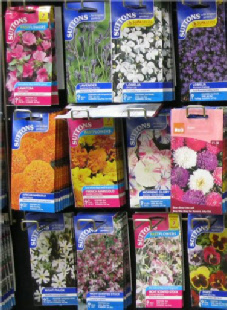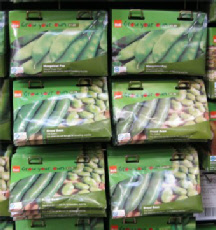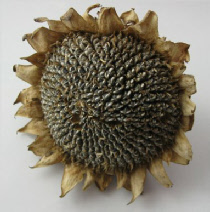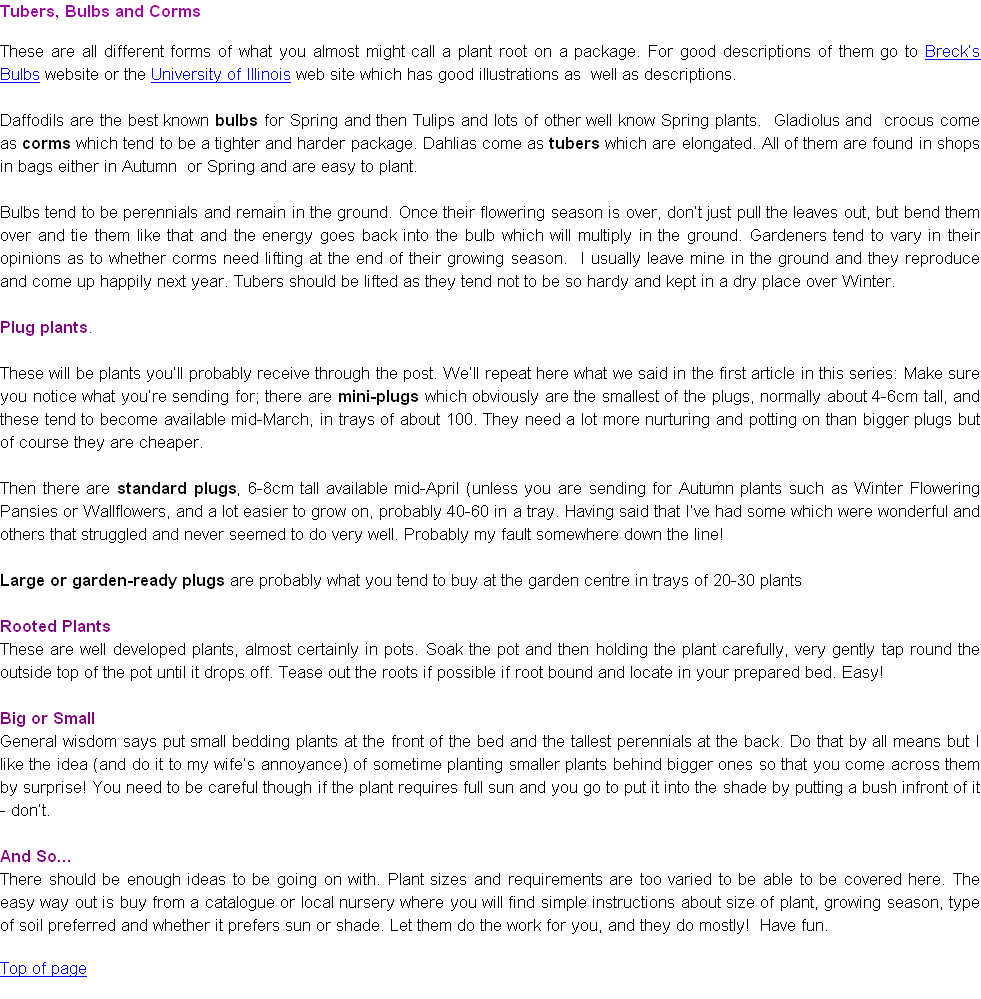Talk to us here at Rochford Life : 0786 342 7294 or E-mail us. For other numbers see individual pages.


Make a point of visiting us weekly! Tell a friend about us.

To return to front ‘Growing Stuff’ page, please CLICK HERE
7. Putting Purpose into Gardening: Planning (i)
In the previous article on Preparing your Garden we suggested that there are the three approaches that we could consider to help us put purpose into our gardening: Preparing, Planning and Projects. This page covers on the second one - planning.
We need to reiterate that our goal here is to help those who would not call themselves gardeners but who are people who would like a little encouragement in getting under way with doing something to the garden that they have. With that in mind, we intend to be very basic in the things we say here.
This page is going to be distinguished from the ‘projects’ page that will follow, so this is not so much the big changes that we might want to make, as simply deciding what to do with what you have already in terms of cleaning up or removing existing plants and sowing seeds, planting bulbs or planting plugs or partially developed plants. Because the subject of assessing your garden can get very complex, we’ll deal with that as a separate subject on a separate page.
Where to Start
Have a wander round the garden; it doesn’t matter whether it is big or small, what do you want it to look like in the Summer (and Autumn?). Part of the fun of gardening is thinking ahead to what you are aiming to grow and what it will look like in say six months time or even six years time (it may even be in ten year’s time). A couple of years ago I planted three small trees in a line with a gap between each of them. I am envisaging those trees in five or six years time. They should grow to an eight foot spread and so I have placed them eight feet apart (assuming four feet either side of the trunk) so they they will eventually touch and just form a wall at about six feet height. The idea is that they will break up the line of sight down the garden yet allow access below the main part of each of them. Watch this space!
But often it’s not merely a case of filling empty spaces, it is more what to do with what is there already. Is it time to get rid of some of the straggly looking plants you have, and getting some replacements? For thinking in detail about the nature of your garden, and what will grow best in what locations, when you get to the end of this page, move on to the next one which goes into more detail about assessing your garden.
Of course one of the things that perhaps the beginner doesn’t think about is the ease (or otherwise) of producing plants in your garden. In the first page of this series we gave a variety of ideas about how to go about getting new plants. Here we might suggest the amount of work that is needed to create plants. In descending order of effort required, we might suggest the following order: Seeds – corms – bulbs – plugs – root plants. Let’s consider them one by one.
In the previous article on Preparing your Garden we suggested that there are the three approaches that we could consider to help us put purpose into our gardening: Preparing, Planning and Projects. This page covers on the second one -
We need to reiterate that our goal here is to help those who would not call themselves gardeners but who are people who would like a little encouragement in getting under way with doing something to the garden that they have. With that in mind, we intend to be very basic in the things we say here.
This page is going to be distinguished from the ‘projects’ page that will follow, so this is not so much the big changes that we might want to make, as simply deciding what to do with what you have already in terms of cleaning up or removing existing plants and sowing seeds, planting bulbs or planting plugs or partially developed plants. Because the subject of assessing your garden can get very complex, we’ll deal with that as a separate subject on a separate page.
Where to Start
Have a wander round the garden; it doesn’t matter whether it is big or small, what do you want it to look like in the Summer (and Autumn?). Part of the fun of gardening is thinking ahead to what you are aiming to grow and what it will look like in say six months time or even six years time (it may even be in ten year’s time). A couple of years ago I planted three small trees in a line with a gap between each of them. I am envisaging those trees in five or six years time. They should grow to an eight foot spread and so I have placed them eight feet apart (assuming four feet either side of the trunk) so they they will eventually touch and just form a wall at about six feet height. The idea is that they will break up the line of sight down the garden yet allow access below the main part of each of them. Watch this space!
But often it’s not merely a case of filling empty spaces, it is more what to do with what is there already. Is it time to get rid of some of the straggly looking plants you have, and getting some replacements? For thinking in detail about the nature of your garden, and what will grow best in what locations, when you get to the end of this page, move on to the next one which goes into more detail about assessing your garden.
Of course one of the things that perhaps the beginner doesn’t think about is the ease (or otherwise) of producing plants in your garden. In the first page of this series we gave a variety of ideas about how to go about getting new plants. Here we might suggest the amount of work that is needed to create plants. In descending order of effort required, we might suggest the following order: Seeds – corms – bulbs – plugs – root plants. Let’s consider them one by one.

Seeds
February is a month for thinking about sowing seeds and if you’re not quite sure when to sow particular seeds – look on the packet! Having said that, when you do look on the packets in the local Garden Centre or hardware store that might keep seeds, you’ll see there is a long sowing season so if you’ve never sown your own seeds, it’s never too late. Browse the shops and get some ideas.
Basically you will normally grow seeds:
February is a month for thinking about sowing seeds and if you’re not quite sure when to sow particular seeds – look on the packet! Having said that, when you do look on the packets in the local Garden Centre or hardware store that might keep seeds, you’ll see there is a long sowing season so if you’ve never sown your own seeds, it’s never too late. Browse the shops and get some ideas.
Basically you will normally grow seeds:
- In trays for growing under glass (in a cold frame, greenhouse or even indoors) and later planting out into the ground where you want then to grow, or
- Directly in the prepared ground.
Both approaches (and see the seed packet for recommendations) require care and effort. Some seeds need help in germinating but again see the packet for guidance.
With trays you control the amount of water input (don’t over water but don’t let the seed compost dry out) but then you do have the effort of planting out when the seedlings have become of a sufficient size for you to gently loosen the growing material and then gently lift the individual seedling by its leaves before depositing into the prepared ground (or maybe into pots).
Sowing directly into the ground means you need to a) protect from cats and other animals that might scuff up your soil and b) keep an eye on the weather to ensure you water the ground in dry periods.
As we’ve indicated, seeds require the most amount of attention and work. Whether they are started off in trays or directly in the ground, they will eventually need pricking out as we suggested above - either to relocate them or simply to give them space to grow. You will have to harden your heart over this because you will be throwing away smaller seedlings or ones that are just surplus to requirements. There’s something in me that hates throwing growing plants away!
Sowing directly into the ground means you need to a) protect from cats and other animals that might scuff up your soil and b) keep an eye on the weather to ensure you water the ground in dry periods.
As we’ve indicated, seeds require the most amount of attention and work. Whether they are started off in trays or directly in the ground, they will eventually need pricking out as we suggested above -



Seeds come in all sorts of sizes. If you grow sunflowers, for instance, the seeds (see left)that you can collect off the heads at the end of their growing season will be quite large, not as large of course as peas or beans (right) which are the seeds of last year’s plant.
The finer the seed (and some are very small indeed) the shallower you tend to plant it. If you collect seeds from last year’s growing, let them dry out and then put them in a smallish paper envelope and clearly make on the outside what they are.
The finer the seed (and some are very small indeed) the shallower you tend to plant it. If you collect seeds from last year’s growing, let them dry out and then put them in a smallish paper envelope and clearly make on the outside what they are.